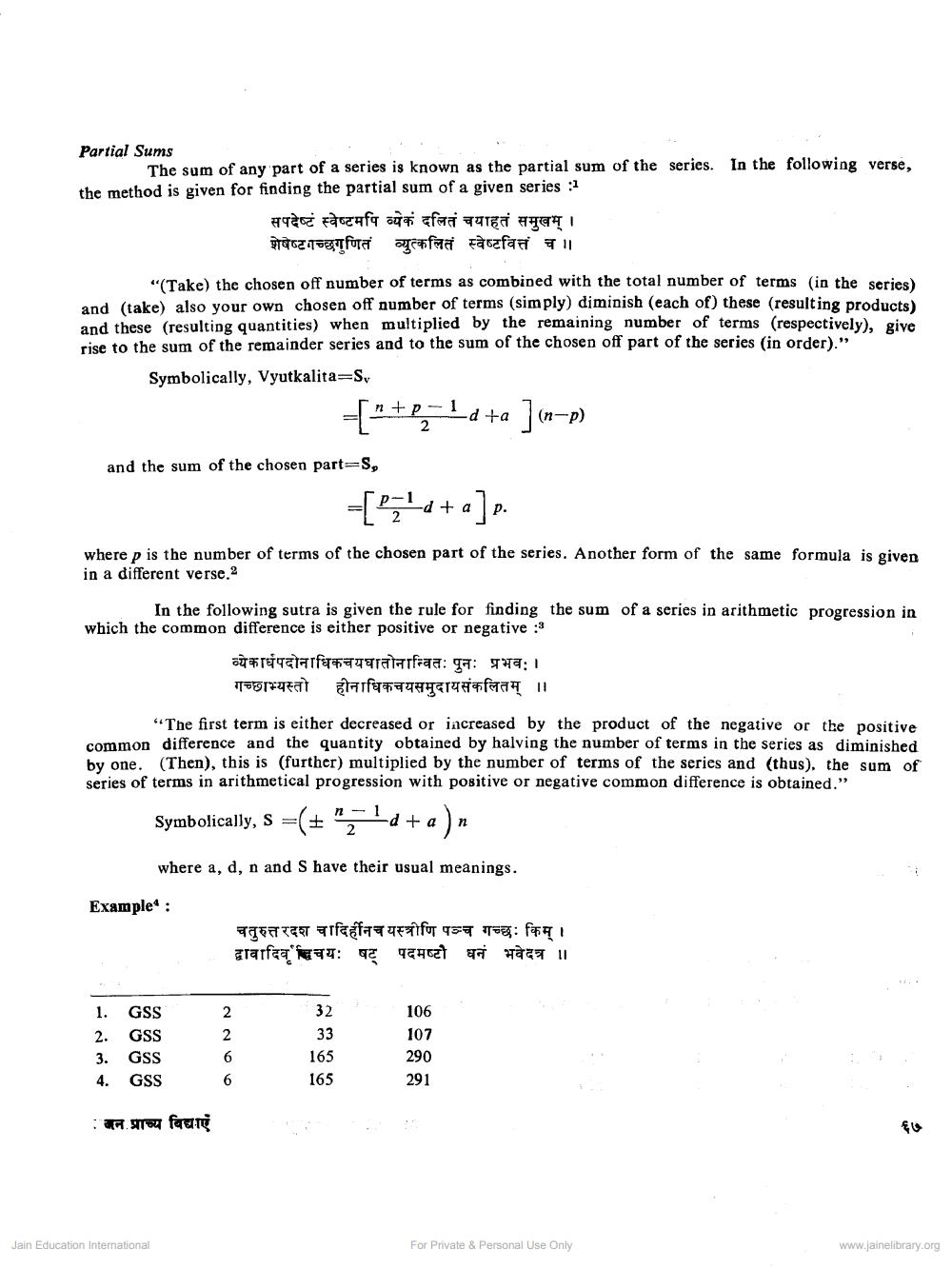________________
Partial Sums
The sum of any part of a series is known as the partial sum of the series. In the following verse, the method is given for finding the partial sum of a given series :1
सपदेष्टं स्वेष्टमपि व्यकं दलितं चयाहतं समुखम् । शेषेष्ट गच्छगुणितं व्युत्कलितं स्वेष्टवित्तं च ।।
“(Take) the chosen off number of terms as combined with the total number of terms in the series) and (take) also your own chosen off number of terms (simply) diminish (each of these (resulting products) and these resulting quantities) when multiplied by the remaining number of terms (respectively), give rise to the sum of the remainder series and to the sum of the chosen off part of the series in order)."
Symbolically, Vyutkalita=S,
={*+p+d+a ] (n-p)
and the sum of the chosen part=S,
=[pz44+a]”
where p is the number of terms of the chosen part of the series. Another form of the same formula is given in a different verse.
In the following sutra is given the rule for finding the sum which the common difference is either positive or negative :3
of a series in arithmetic progression in
व्ये कार्धपदोनाधिकचयघातोनान्वितः पुनः प्रभवः । गच्छाभ्यस्तो होनाधिकचयसमुदायसंकलितम् ।।
"The first term is either decreased or increased by the product of the negative or the positive common difference and the quantity obtained by halving the number of terms in the series as diminished by one. (Then), this is (further) multiplied by the number of terms of the series and (thus), the sum of series of terms in arithmetical progression with positive or negative common difference is obtained."
Symbolically, S =
2
where a, d, n and S have their usual meanings.
Example:
चतुरुत्तरदश चादित्नच यस्त्रीणि पञ्च गच्छः किम् । द्वावादिविचयः षट् पदमष्टौ धनं भवेदत्र ।।
32
106
107
1. GSS 2. GSS 3. GSS 4. GSS
2 6 6
33 165 165
290
291
जन प्राच्य विद्याएं
Jain Education International
For Private & Personal Use Only
www.jainelibrary.org




